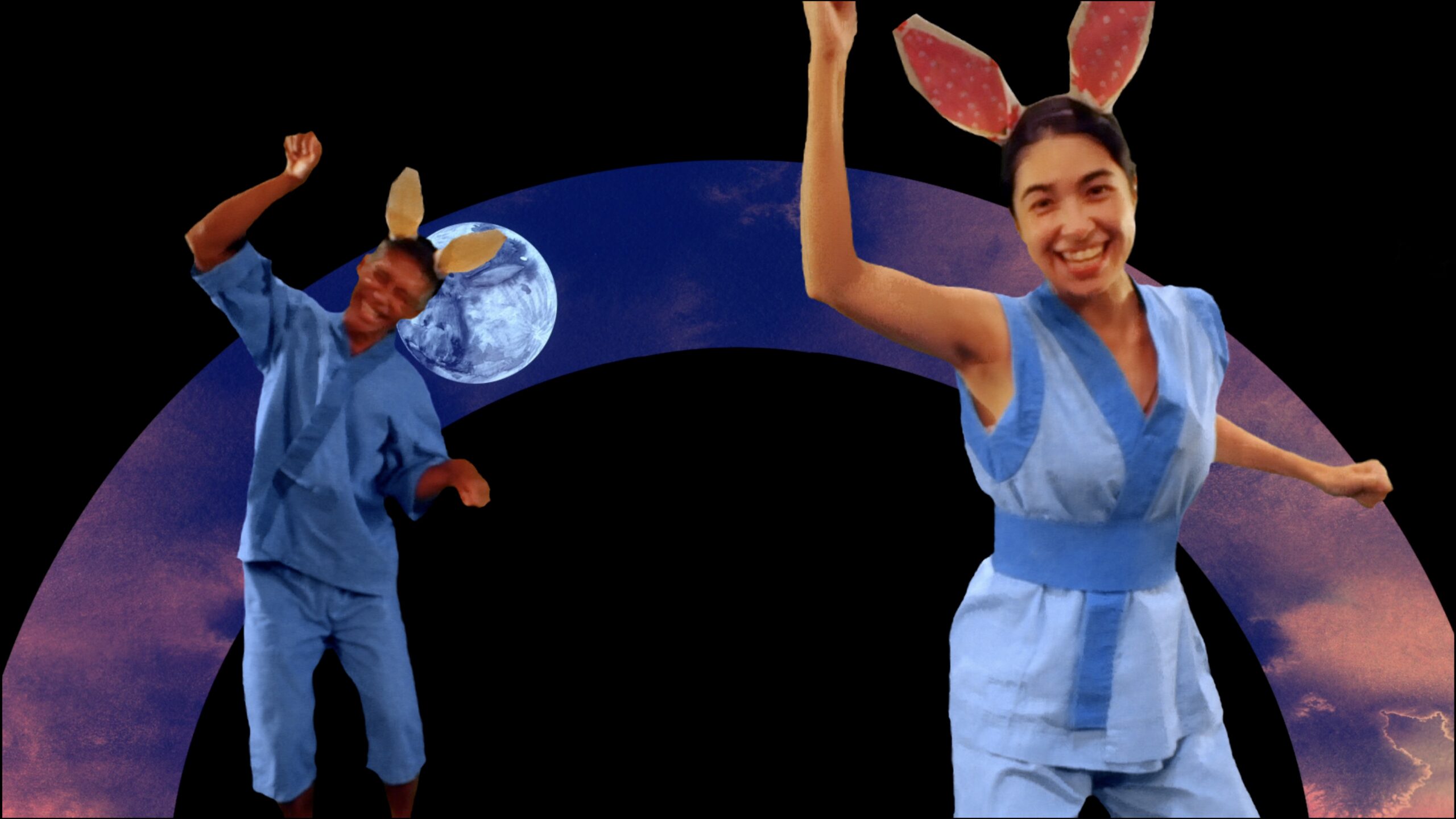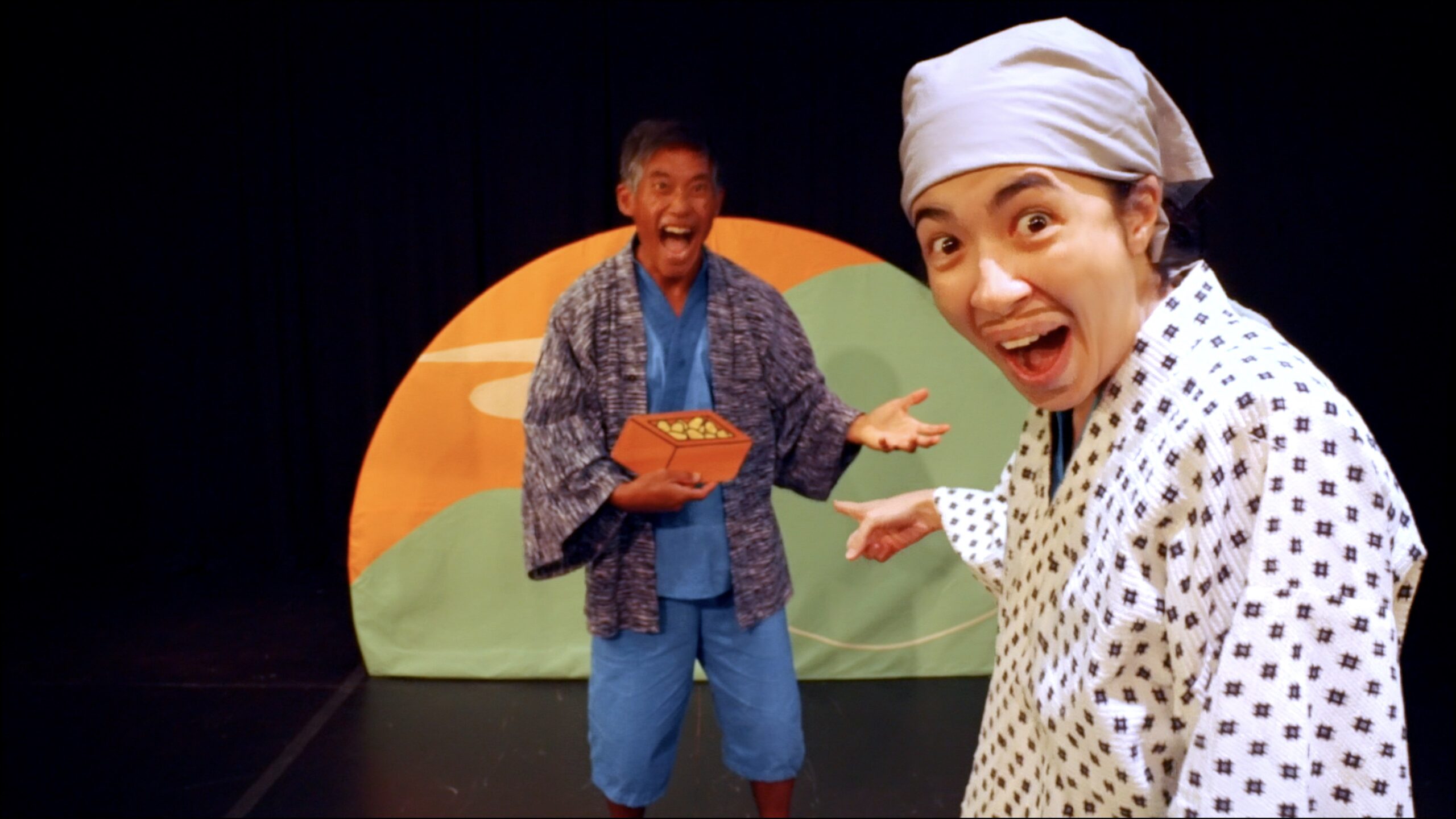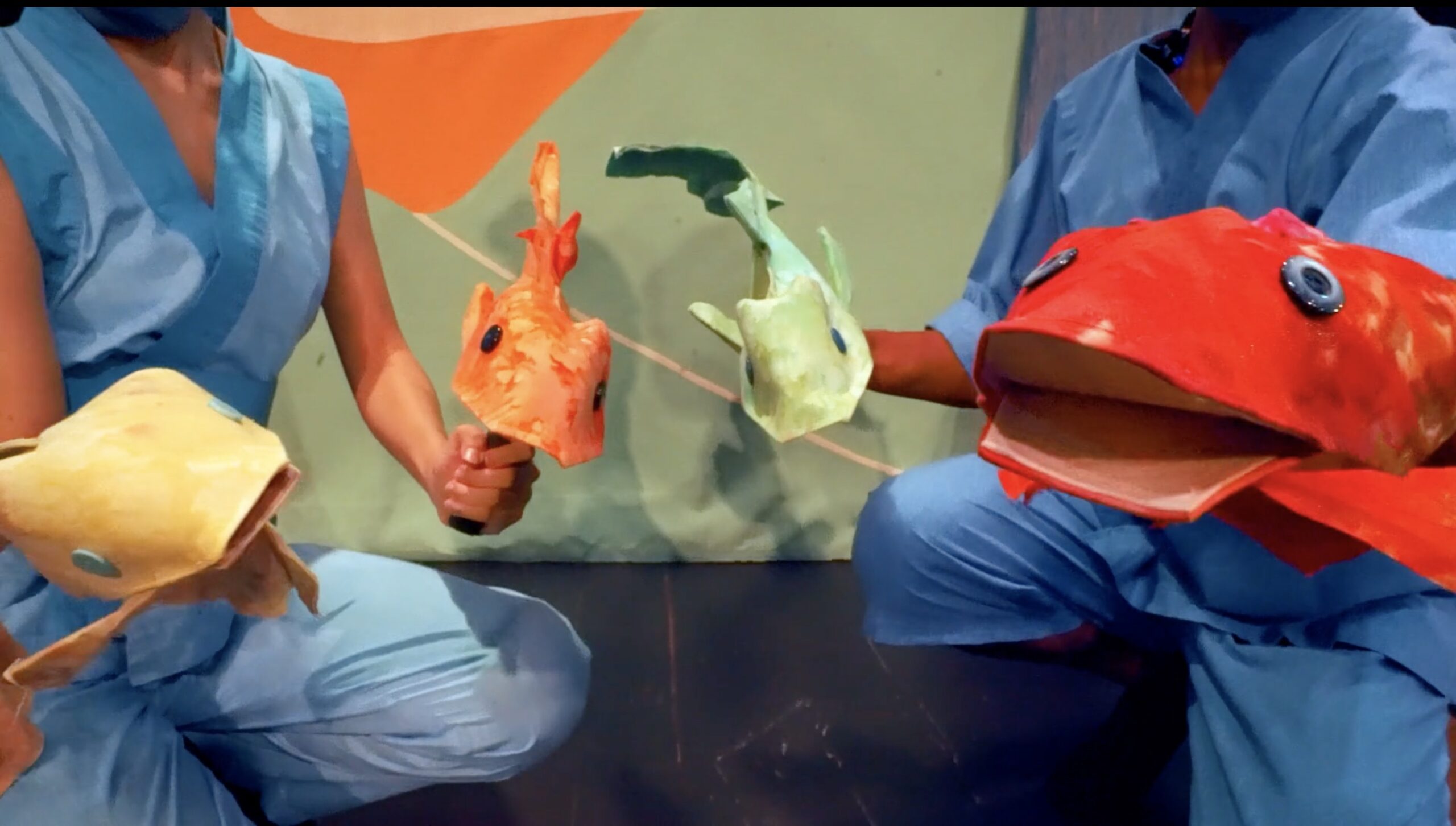EducationAL Materials CARP

WELCOME TO OUR EDUCATOR GUIDE
Please have patience as we figure out the new format for these Virtual Field Trips. We intend to keep adding material to this guide as we go in response to what you tell us is helpful. We also know that you will adapt these simple ideas and wrap them into your classroom with creativity and charm. You know your particular group of students so please use and adapt any of these ideas as you see fit.

The Rolling Musubi
Long ago and far away across the wide blue sea, there lived a hard-working old man and old woman. One day, the old man went up into the mountains to gather wood. When he sat down to eat his lunch, one of his rice balls tumbled away. Down the slope of the mountain it tumbled until it finally rolled into a large hole. The old man chased after the rice ball and stopped at the hole. He bent down to look inside and from within the hole he heard a soft song.
The old man was very excited, so he climbed back up the mountain, picked up another rice ball and rolled it away. Down it tumbled into the hole. When he crouched down near the hole, he heard the song once more.
The old man peeked into the hole, but as he did, he overbalanced and tumbled right into the hole itself. As he tumbled, he heard another song. In the hole was a mouse world, where hundreds of little mice were happily singing and making rice cakes. “Thank you for the rice balls, kind sir. We will treat you to a feast to repay your kindness. Come and join us in our song,” they called. And so, the old man and the mice sang,
The old man had a wonderful time singing and dancing with the mice. “Thank you for the feast, but now it is time for me to go home,” he said. “Wait, old man,” said the smallest mouse, and he gave him a box. “Here is our gift to you.” When the old man returned home, he opened the box and was astounded to find it filled with money and treasure. “There are enough riches to last us all our days,” the old man said to the old woman. And they were very happy for the rest of their lives.
However, when the old man told his story to a greedy, old neighbor, the greedy old man thought he would do exactly the same thing, so that he, too, could receive a fortune from the mouse world. He immediately went into the mountains and dropped two rice balls into the hole, then tumbled in himself.
Hundreds of mice were happily singing and making rice cakes. After the greedy old man entered the mouse world, he decided to chase away the mice and keep all of the treasures for himself. So, he pretended to be a cat and began to miaow. “Miaow,miaow.”
The frightened little mice scattered every which way and disappeared. Just as the greedy, old man thought he could now take all the treasure, everything went black. He realized that the money and treasure had vanished with the mice and now he was left with nothing. Not even a rice ball. Only after a long time scrabbling around on his hands and knees in the darkness, was he able to find the entrance to the hole and leave the mouse world.
Since that time, no one has ever found the mouse world again. Although sometimes, if you are walking high up in the mountains of Japan, you may hear the mouse song carried by the wind.
Content Standards
See all of the Common Core and Hawaii Content and Performance Standards that relate to this production with a quick download.

Before Seeing the Show
The Carp Who Would Not Quit includes many stories, including the story‘The Rolling Musubi.’ Read the story aloud for your students and then engage them in these simple drama activities.
Drama Activities
FREEZE: Guide students to shape their bodies as each of the characters and then have them freeze in their poses/shapes. What does the character look like? (Freeze). What does the character like to do? (Freeze). What’s something funny that the character likes to do? (Freeze).
ACTION: Guide students to walk about the room as each of the characters. How does the character feel? How fast or slow does the character move? What is this character doing as he/she walks about?
STORY EXPLORATION
Narrate parts of the story, guiding the students to act out the moments as you tell them. Explore different parts of the story more than once each time, encouraging the students to try new ways of showing the action.
STORY PLAY
Ask for or assign volunteers to portray each of the characters. Narrate the entire story, guiding students to play out each moment as you tell it. Repeat the experience, enlisting new volunteers each time until all of the students have a chance to perform.
Making Mochi with Serina and Junior

RESILIENCE: An Opening Activity
READING – Connect Literature to the Play
There are many books on local library shelves that contain themes and ideas that are similar to THE CARP WHO WOULD NOT QUIT. Use your play-going experience to introduce and explore new books with your students and to discuss those themes and ideas.
BEFORE SEEING THE HTY PLAY
READ Peace Tales by Margaret Read MacDonald
Talk about:
Respect: How do the characters in the story show or NOT show respect for each other? How does their attitude help or hurt their relationship?
Peace: Which characters want peace? How do the characters help peace happen?
AFTER SEEING THE HTY PLAY
READ The Last Kappa of Old Japan: a Magical Journey of Two Friends by Sunny Seki
Talk about:
Friends – Who were the friends in the story? What did they do?
Caring – How did the friends care for each other?
Persistence – How did the friends work to help the world?
